Definition of Done: Objective vs Subjective
Explains the difference between subjective goals and the objective Definition of Done in Scrum, highlighting how clear, measurable criteria ensure …
Achieving excellence in software craftsmanship, architecture, and engineering practices.


Technical Mastery refers to the pursuit of excellence in software craftsmanship, architecture, and engineering practices. It encompasses a deep understanding of technologies, methodologies, and tools that enable teams to create high-quality products efficiently. This mastery is crucial as it directly impacts a team’s ability to deliver value predictably and sustainably, fostering a culture of continuous improvement and innovation.
By cultivating Technical Mastery, organisations empower their teams to tackle complex challenges with confidence, ensuring that solutions are not only effective but also maintainable over time. This long-term focus on quality and skill development leads to reduced technical debt, enhanced collaboration, and improved responsiveness to changing market demands.
Moreover, Technical Mastery supports the principles of Agile and DevOps by promoting a shared understanding of best practices and fostering a mindset of experimentation and learning. It enables teams to implement robust engineering practices, such as automated testing and continuous integration, which are essential for maintaining a steady flow of value delivery. As teams become more adept at their craft, they can better align their efforts with organisational goals, ultimately driving greater success and resilience in an ever-evolving landscape.
Explains the difference between subjective goals and the objective Definition of Done in Scrum, highlighting how clear, measurable criteria ensure …
Explains how managing technical debt and distinguishing it from poor quality can boost product efficiency, reduce costs, and support sustainable …
Explores how DevOps transformation, refactoring, and ownership reduce technical debt, streamline development, and boost efficiency, team satisfaction, …
Explores how technical excellence in Agile development reduces risk, prevents technical debt, and boosts product quality and delivery speed through …
Unlock a smarter Definition of Done, start small, evolve standards, and build team momentum without overwhelm. Discover how progress drives …
Explores how optimising systems, reducing technical debt, and strong leadership improve engineering quality, productivity, and innovation while …
Professional Scrum Teams prioritise software quality, accountability, and continuous improvement, ensuring each release is reliable, defect-free, and …
Explains technical debt in software development, its impact on teams, and practical strategies to identify, manage, and reduce it for long-term …
Explains the risks of the pick-n-mix branching anti-pattern in source control, its impact on code quality, and recommends feature branching and …
Learn key practices for adopting modern source control and DevOps, including automation, release pipelines, and team collaboration to improve software …
Test First is a practice that defines success before implementation. It supports manual and automated testing, with a strong preference for automation …
Unlock seamless governance, security, and scale with Azure DevOps, integrated tooling that lets you deliver value, not just manage complexity.
Highlights the importance of promptly fixing software bugs instead of managing backlogs, arguing that unresolved defects harm product quality and team …
Explains why modern software teams avoid branch promotion, using continuous integration, feature flags, and production-like testing to streamline …
Explores how test-driven development and pair programming improve software architecture, code quality, team skills, and long-term productivity by …
Explores how automation in testing, deployment, and validation streamlines development, reduces technical debt, and builds confidence for teams and …
Explores how frequent code deployments improve code quality, reduce technical debt, enable faster feedback, and support iterative, user-focused …
Explains how to set up a scalable release pipeline using Release Management in Visual Studio 2013, covering continuous release, feedback environments, …
Technical debt increases risk to products and businesses, leading to hidden costs, reduced quality, and slower delivery. Ignoring it can harm …
Intensive five-day course for software developers covering Scrum, Visual Studio 2010, .NET, and Agile practices through hands-on team sprints and …
Explains how integrating security and quality early in software development, using practices like TDD, pair programming, and continuous feedback, …
Explores how Visual Studio 2012 supports continuous quality enablement, automated testing, and rapid delivery in modern software development for …
Explains how to set up and use Standard Environments in Visual Studio 2012 TFS for automated software deployment and testing, enabling consistent, …
Explains the role of automated testing in modern software development, covering types, integration, benefits, challenges, and tools for maintaining …
Explains how to configure MSTest for automated testing of web services on Team Foundation Build Services 2010, including handling dynamic server ports …
Explores how managing technical debt enables faster delivery, higher product quality, and greater innovation, highlighting strategies for continuous …
Learn why simple branching strategies like GitHub Flow and Release Flow help teams deliver faster, reduce risk, and avoid the pitfalls of complex …
Mentoring program for developers and teams to master Agile, DevOps, Kanban, and evidence-based practices, fostering engineering excellence and …
Explores how poor engineering, shallow product thinking, and organisational denial lead to fragile systems, stressing that true resilience requires …
Technical debt includes slow feedback, fragile systems, and manual processes that hinder progress. Addressing it early with automation and testing …
The Definition of Done can evolve to improve quality but should not be weakened or vary per backlog item. Consistency ensures transparency and …
Explores why traditional Dev-Test-Staging-Production pipelines fall short and highlights audience-based deployment for safer, faster feedback in real …
Explores using AI embeddings and cosine similarity to improve related content recommendations in Hugo, enhancing semantic relevance, user navigation, …
Explores how staging environments aim to reduce risk in software development, their hidden costs, and modern alternatives like feature flags and …
Explores common DevOps challenges to rapid delivery, highlighting automation, feedback loops, mindset shifts, and compliance for achieving agile, …
Staging environments can’t fully replicate production, often leading to false confidence. Real risk reduction comes from safe, incremental releases to …
Explains why true agility requires end-to-end automation and short feedback loops, not just Agile teams, to maximise value and efficiency for …
Manual testing limits release speed and quality, while automation enables faster, more reliable software delivery by reducing regressions and tester …
Personal experiences and lessons on using Azure DevOps, covering its evolution, migration strategies, custom tools, and practical advice for …
True organisational resilience means improving technical health, like testing, automation, and architecture, beyond just surviving incidents or …
Technical debt always harms productivity and system stability. Ignoring it leads to inefficiency and risk, making it essential to address rather than …
Explores how adopting naked agility boosts engineering excellence, quality, and leadership by addressing technical debt, shifting left, and fostering …
Learn key strategies for building business resilience and continuity, including observability, system decoupling, routine deployments, team …
Explore proven strategies from Azure DevOps for building resilient, reliable software systems, covering transparency, automation, telemetry, incident …
Managing the development, maintenance, and governance of software applications throughout their lifecycle.
Learn how NKD Agility supports organisations in building engineering excellence through modern practices like performance engineering, testing in …
Explains how Scrum Sprints are primarily for planning, not fixed delivery, and discusses aligning delivery schedules, continuous deployment, and …
Explores challenges and solutions for manual testing in agile software development, focusing on tracking, automation, actionable bugs, and integrated …
Step-by-step guide to building an automated Release Management pipeline for professional developers, covering build, deployment, environment setup, …
Explains how to unit test applications against the Team Foundation Server 2012 API, focusing on handling authentication for automated and unattended …
Summary of sessions from a Glasgow developer event, covering refactoring, dynamic languages in .NET, MVVM for WPF, architecture, and ASP.NET 4.0 …
Explains how to resolve the "CleanWorkspacePackageTempDir does not exist" build error in Team Foundation Build 2012 for upgraded ASP.NET MVC projects …
Explains how to log Elmah error reports as work items in Team Foundation Server, including attaching error logs, using templates, and retrieving error …
Step-by-step guide to upgrading Team Foundation Server 2008 to 2010, including in-place upgrade, build server update, and migrating to a new domain …
Explains how to build a TFS Integration Platform Work Item Tracking (WIT) adapter for a source system without history, covering versioning, field …
Explains how to reserve a build agent in Team Foundation Server 2012 using custom activities, agent tagging, and workflow changes to ensure reliable, …
Step-by-step guide to migrating FogBugz data to TFS 2012 using a custom CSV adapter with the TFS Integration Platform, including setup, mapping, and …
Step-by-step guide to upgrading TFS 2008 and WSS v3.0 with SfTSv2 to TFS 2010 and SharePoint 2010, including process template migration and data …
Step-by-step guide to setting up a Domain Controller in Azure for Active Directory integration, including VM creation, configuration, and syncing with …
Explains how to create and deploy server-side event subscribers in Team Foundation Server 2010 using the ISubscriber interface to handle and process …
We partner with businesses across diverse industries, including finance, insurance, healthcare, pharmaceuticals, technology, engineering, transportation, hospitality, entertainment, legal, government, and military sectors.

Illumina

SuperControl
NIT A/S

Bistech

Genus Breeding Ltd

Graham & Brown

Healthgrades

ProgramUtvikling
CR2

Big Data for Humans

MacDonald Humfrey (Automation) Ltd.

Freadom

Capita Secure Information Solutions Ltd

Boeing

Lean SA

Microsoft

DFDS

Ericson

New Hampshire Supreme Court

Royal Air Force

Department of Work and Pensions (UK)

Washington Department of Transport

Nottingham County Council

Washington Department of Enterprise Services

MacDonald Humfrey (Automation) Ltd.

Lockheed Martin

Bistech

Kongsberg Maritime

Workday

Ericson